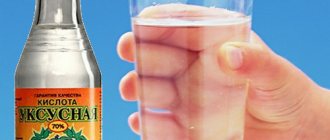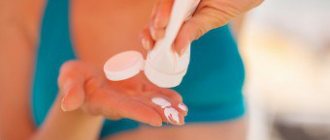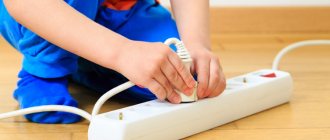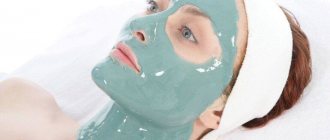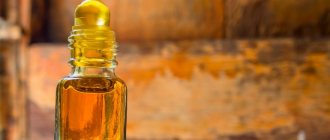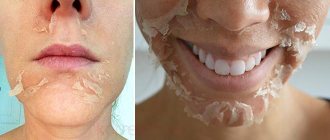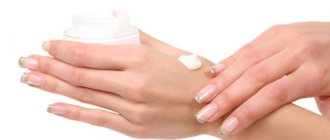Each of us had to see people with reddened skin in the summer on the Crimean, Sochi or Egyptian beaches, who recklessly continue to lie in the hot sun. The same applies to summer residents who, having escaped from the city for the May holidays, put on sundresses and open T-shirts and joyfully immerse themselves in caring for their plots, without taking care of their health. Moreover, if you delicately suggest to such a person that it would not hurt for him to go into the shadows, he sometimes begins to argue and say that nothing terrible is happening. In these cases, such people sometimes even develop blisters on their skin after sunbathing.
You can understand such people - in modern busy life, you rarely get the opportunity to soak up the seaside. Therefore, people try to spend as much time in the sun as possible. This is a huge mistake. Why is our beloved sun so dangerous?
How and why blisters form after a sunburn
Not everyone knows that blisters from the sun, in fact, are not a harmful, but a beneficial phenomenon. They protect us from the harmful effects of ultraviolet radiation, a component of the sun's rays.
Unfortunately, people experience sunburn with a delay. Sometimes this delay is several hours. It happens that a person, without feeling any discomfort, spends the whole day under the sun, and in the evening blisters appear on the skin, the temperature rises, and the person cannot sleep.
People who have a very rough idea of medicine sometimes even pierce such blisters with a needle, which is strictly prohibited, especially if this needle is not disinfected. But if there are no blisters, what condition can be considered a sign of sunburn? After all, sometimes a person does not see his back and does not know what color the skin is on it.
Why is my face swollen after sunbathing?
The mechanism for the development of facial swelling after sunbathing has been well studied - ultraviolet rays penetrate into the deep layers of the dermis and disrupt blood circulation in the capillaries. To describe it in non-medical language, liquid begins to sweat out of the vessels (after all, it heats up under the sun) and accumulates in the subcutaneous layers.
If this process has already begun, then the eyelids, nose, and area around the mouth are most often affected by swelling. Often the problem affects only one half of the face - it depends on which side and in which direction the sun’s rays “worked”.
And here is more information about what to do if your skin peels off after sunbathing.
Symptoms of sunburn
- Redness of the skin.
- The appearance of small bubbles or, if deeper tissues are affected, one large bubble filled with cloudy contents.
- The person is freezing. In some cases, the temperature rises.
- Headache,
- Stinging in the eyes.
- Nausea and even vomiting are possible.
Everyone should know that heat stroke sometimes occurs after a sunburn. In this case, the person feels dizzy, lightheaded, and sometimes even loses consciousness. His eyes look sunken, and there are pronounced dark circles around them. In this case, you must place a wet towel on the person’s forehead and call an ambulance.
As we can see, some symptoms resemble the condition that occurs with a cold or flu. However, all this is accompanied by a strong burning sensation of the skin, discomfort, and the inability to lie on the burned area of the skin.
Who should be particularly concerned about sunburn?
It is known that not all people are susceptible to sunburn. Some lucky people can spend hours in the open sun without experiencing any consequences. And others burn in less than an hour. What is the reason for this? Which people are at risk:
1. Children of primary preschool age. Doctors generally recommend that children under three years old should not be taken to the seaside in the summer, and if you live in the southern regions, walks with children should only be carried out in the early morning or after five o’clock in the afternoon.
2. People with light skin color, light eyes and hair. Especially if they live in the northern regions and come to the south only on vacation. Such people should leave the beach after 11 o'clock in the morning and return there only by five o'clock in the afternoon. When you are on a sunny street in open clothes, you must definitely use protective products against sunburn, which can be purchased at any resort goods store.
3. People with a family history of melanoma (skin cancer). It is better for such people not to sunbathe at all, but to relax at sea under a canopy or a sun umbrella, avoiding direct sunlight.
What to do if your face is swollen after sunbathing
Go indoors to prevent sun exposure. If it is not possible to go to a nearby store or cafe, and the house is far away, move under the shade. The sunburn will stop developing. If your face is swollen due to sunburn, the swelling will slowly subside and the skin will calm down.
The swelling may be associated with an allergic reaction; you need to take an antihistamine (Cetrin, Diazolin, Loratadine). Further actions:
- wipe the affected areas with a handkerchief dipped in water;
- drink more fluids;
- use pharmaceutical products.
Negative effects of sunburn on human health
Most of our contemporaries, traveling south to the sea, dream of getting an even “chocolate” tan. It is considered beautiful. It’s interesting that fashionistas didn’t always have this opinion. Just a century ago, tanned skin was considered a sign of ignoble origin, “plebeianism” and slovenliness. Intuitively, our great-grandmothers felt that the sun had a harmful effect on female beauty. What is this harmful effect?
- Dry skin ages earlier. Wrinkles appear on it, which then cannot be removed by any expensive creams and lotions.
- After a sunburn, the skin begins to peel, and with severe burns, whole flaps peel off from the burned areas, which, of course, looks ugly.
- Some people, if they do not protect their face from the sun, develop freckles and age spots on their skin.
- But the worst thing is that UVB rays cause skin cancer. Statistically, this is the most dangerous type of cancer that occurs in our time.
Treatment
Help for burns must be provided immediately after prolonged exposure to scorching rays.
A number of specific actions must be performed, regardless of the degree of injury received. First aid for a sunburn involves the following:
- Elimination of hyperthermia of the affected area. You should move to a cool place, protected from the sun.
- Assess your condition adequately. If you experience chills, nausea, or headache, it is better to call an ambulance, since most likely it is a serious burn.
- Elimination of body dehydration. If you feel normal, you should drink plenty of water to prevent dehydration.
- Relieving pain. If pain is observed, you can take a tablet of analgin, baralgin, ibuprofen. Then proceed to therapeutic actions.
After receiving a sunburn, you should throw a wet sheet over yourself to relieve the condition. Such lotions moisturize the skin, relieve pain and burning, and prevent further destruction of the layers of the epidermis. If the lesion is local, then the burned area should be immersed in cool water or in the shower. At the same time, you should drink more clean water orally to prevent dehydration. An ordinary damp cloth applied to the burned area relieves pain, moisturizes the skin, and soothes it.
During treatment, the skin should be protected from penetration of harmful microorganisms; to prevent peeling and peeling of the epidermis, the skin should be treated with a solution of vitamins E and A, as well as aloe juice. Ice from the freezer cools the skin and relieves pain. It is placed at a distance of 15 cm from the affected area.
After first aid for sunburn has been provided, it is necessary to carry out therapy. In case of the first and second degree of burning, you can only prevent sunlight from entering the affected area and constantly treat it with anti-burn agents, drink large amounts of liquid, and take vitamins E and A as part of multivitamin complexes. In other cases, it is better to seek qualified medical help, since doctors know better how to treat sunburn and will be able to select adequate therapy.
As part of anti-burn treatment, the following drugs are prescribed:
- Non-steroidal anti-inflammatory drugs. Ibuprofen, Diclofenac to eliminate pain, inflammation and swelling.
- Vitamins C, E, A. They prevent the degeneration of healthy cells into malignant ones and promote rapid tissue restoration. A course of vitamins is prescribed by a doctor.
- Antihistamines.
For example, Tavegil and Cetril eliminate itching and redness of burned skin. They are prescribed only by doctors and taken strictly according to the instructions.
For local anesthesia and treatment of affected skin, various creams, gels, sprays are used. Below are the most common external remedies used for sunburn as first aid.
- Preparations based on panthenol. Panthenol is a water-soluble vitamin that is part of coenzyme A. Under its influence, cells are quickly regenerated. Ointments or sprays with panthenol form a film on the skin and protect against the penetration of microbes, stimulates regenerative processes. The skin does not crack or peel. Apply panthenol-based anti-sunburn skin products as needed.
- Libyan aerosol. Has an antiseptic and analgesic effect. The drug contains lavender oil, fish oil, anesthesin, and tocopherol acetate. The aerosol form is very convenient. It is enough to spray the drug once a day on the burned area.
- Elovera. The ointment contains vitamin E and aloe extract. It improves cell metabolism and promotes skin restoration. Apply the ointment several times a day. This drug is prohibited for treating burns in children and adolescents under 18 years of age.
- Karotolin. A solution that helps eliminate redness and hyperthermia, accelerates regeneration processes. It quickly cools the burn, so the person feels much better. Carotolin is applied to a damp cloth and applied to the affected areas twice a day.
- Olazol. One of the most popular products based on sea buckthorn oil. It relieves redness well, eliminates pain, and promotes rapid healing of the skin. It is enough to spray the aerosol on the burned area twice or thrice a day.
Common mistakes when treating sunburn
1. One of the traditional methods of treating burns, including sunburn, is to smear the burn site with oil. Often sunflower oil or any other is used for this. Unfortunately, this method is completely wrong. The fact is that the oil film on the surface of the affected skin prevents the affected area from coming into contact with air. This delays the healing process.
2. You should not bandage the affected areas of the skin with various, sometimes not very clean, pieces of fabric. This can cause blood poisoning and other complications, and does not promote healing.
3. Piercing blisters with various sharp objects. The blister should go away on its own; you should not speed up this process - such acceleration may have the opposite result.
4. Do not apply pieces of ice to blisters formed at the site of sunburn.
What to take with you on vacation to the south to prevent sunstroke
Of course, each of us knows that walking bareheaded in summer at high temperatures is dangerous. But when you choose a headdress, give preference to a wide-brimmed hat over a skullcap. A hat with a brim will protect not only your head, but also the skin of your face and neck. Sunglasses won't be unnecessary either. If you wear prescription glasses, before traveling south, make sure to purchase another pair of glasses with tinted lenses.
Be sure to take a sun umbrella with you. It can be installed on the beach near the water. Do not take only sundresses with you to the south, even if the temperature in the place where you are going does not drop below thirty degrees. A light blouse made of natural material will protect your shoulders, neck and forearms from sunburn.
When on the beach in a swimsuit, especially in the first days of your vacation, throw a scarf, a special cape, or at least a towel over your shoulders. A fashionable and very useful beach accessory that can be used just for these purposes is a pareo.
Buy special products to protect your skin from the sun; it is advisable that the sun protection factor in these products is at least thirty.
Recommendations and prevention
To prevent the development of watery blisters and blisters after sun exposure, we recommend following these tips:
- Avoid exposure to the sun during hours when radiation activity is at its peak (from 10 a.m. to 4 p.m.).
- Use sunscreens and products with a protective factor of at least 30, especially carefully treat your face, neck, shoulders and arms, that is, the areas with the most delicate skin that are not covered by clothing
- Use sunscreen half an hour before leaving the house.
- People who suffer from excessive sweating, as well as beachgoers cooling off in cool water, are advised to use sunscreen every two hours.
- If your skin is very sensitive, when going to the beach, give preference to a swimsuit with SPF.
- Wear wide-brimmed hats, cover your eyes with dark-tinted glasses, and try to stay mostly in the shade under an umbrella.
- The skin on your lips is very sensitive and burns easily, remember this and use balms with high SPF.
«>
